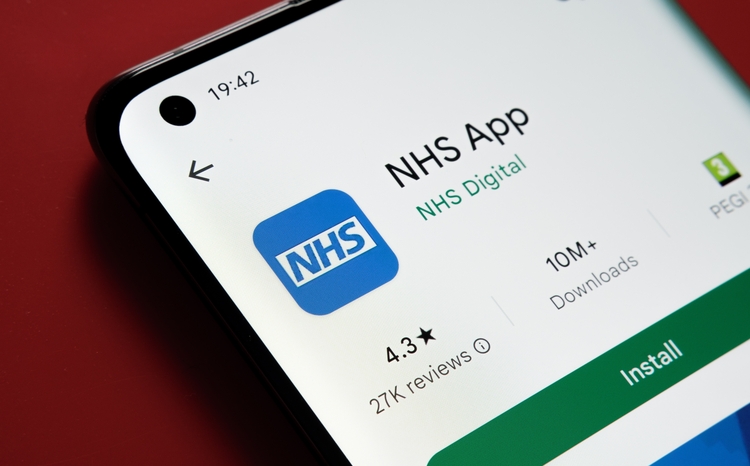Advisory Series: Population Health Management
- 21 May 2018


Population Health Management – Advisory Series, May 2018

By Owen Hughes – Digital Health
Population health management is often touted as an important concept for the NHS, and key to ensuring its sustainability. But, as Owen Hughes reports, there will be barriers to overcome along the way – not least the challenges of linking previously disparate datasets.
As the NHS strives for sustainability, and technology gallops on, there has been an outpouring of new digital solutions designed to alleviate pressures on healthcare staff. Most fall into either the category of automating processes or that of empowering patients to take better care of their own health.
But population health management – a concept long touted as important for the NHS – touches a little on both.
Population health is the concept of gathering public healthcare data across multiple care settings and analysing it, with a view of identifying the most prevalent needs of a community.
The result, so say its advocates, is the ability to devise healthcare strategies tailored to the unique needs of a populace, thus ensuring more efficient spending of healthcare funds – not to mention less strain on creaking NHS infrastructure.
“The ability to deliver analysis of population health needs will drive benefits in many areas,” argues Richard Corbridge, chief information officer of Leeds Teaching Hospitals NHS Foundation Trust.
Corbridge is flying the flag for Yorkshire and Humber as part of NHS England’s local health and care record exemplar (LHCRE) programme, which aims to link regional health organisations into digitally-connected cohorts. Ultimately, the idea is to harness population health management techniques.
For him, the geographic linking of data presents the opportunity to identify at-risk groups of people so that care can be targeted to where it’s needed most.
“As a geography, we can understand better the needs of a population and we can create cohorts of care delivery across a geography that will ensure care is more efficient, practised by the right professionals in the right locations, and ultimately ensure that care is centred around the patient and their needs.”
From treatment to prevention
Corbridge is by no means alone in his view. It’s widely accepted that there is a need for the current healthcare system to place more emphasis on illness prevention than treatment, not least by using data to identify potential beneficiaries of proactive intervention.
Such interventions encourage healthy living habits that can stave off the onset of more complex health conditions, be they physical, mental or social. This often falls under the umbrella of social prescribing, whereby patients are referred to non-medical sources of support within the community to improve their overall wellbeing: fitness classes and healthy cooking programmes, for example.
“Prescribing is a huge cost to the NHS, so it would be farcical to ignore that element of care,” says Graham Crawford, director of analytics at North East London Commissioning Support Unit (NEL CSU).
NEL CSU has been tasked with delivery of a population health management dashboard though a contract commissioned by NHS England.
The dashboard, delivered by the CSU alongside a number of partners including Cerner, Imperial College Health Partners (ICHP) and Optimedis Cobic UK, will enable integrated care systems in England to aggregate health data with a view to identifying opportunities to improve patient care.
“The key thing for us is to make sure that we are looking at the whole population – those people who are well, like you and me – but equally those people and groups who are perhaps susceptible to certain disease types, who are managing it at home,” says Crawford.
Home and away
The rise of remote monitoring technology and telehealth means it is increasingly possible to care for people at a distance. Not only does this ease the pressure on overcrowded hospitals, but also empowers patients to be in control of their own care decisions. Many argue that population health management could help identify those who can be best cared for at home – before they wind up in hospital.
“The financial challenge that we have in the NHS is that we need to predict and be preventative and not just treat patients when they come through the door,” explains Crawford.
“Everything traditionally has been based in large acute hospitals, which are expensive. Advances in technology mean people can treat themselves at home and don’t need to have a consultant sitting over them.”
The ‘semantic harmonisation’ challenge
As a concept, population health management is very much in its fledgling stage. Its ultimate success rests on the ability to run analytics on – and draw insights from – data from primary, secondary and social care settings: no easy feat given the NHS’s current fragmented nature.
NEL CSU’s Crawford identifies this as both a technical and information governance challenge. “From a technical perspective, the issue has been around linage of data: it’s been very siloed.”
He also suggests the wildly varying quality and quantity of data within different care settings has “prevented a lot of good stuff”.
“Health data is fairly mature and therefore has quite good data quality, whereas social care isn’t necessarily. It doesn’t have that common key.”
John Ainsworth, professor of health informatics at the University of Manchester and director of Connected Health Cities, says varying data quality across primary, secondary and social care is “a big issue [with which] to grapple”.
“Once you start to link datasets from across a population, you immediately start to find that in many cases, although it might say the same thing, we’re not actually talking about the same thing,” he adds.
“This is the problem we term often ‘semantic harmonisation’ – how do you get a consistent dataset that means the same thing?”
While CHC is not a population health initiative per se, it shares a similar mission statement at its core – combining health data with technology to improve care services.
Launched in 2016, the £20m programme aims to drive insights into more targeted use of community-based care. It does so by analysing data on the effectiveness of different treatments and health pathways.
While access to data is one thing, drawing insights that can be acted upon to improve healthcare provision is another, suggests Corbridge.
“The ability to study data so that it can become information offers opportunities that have yet to be truly understood.
“Data and turning it into information is one of the key barriers to a wider adoption of population health principles.”
Liking LHCRE
But efforts to create digitally-linked trusts through NHS England’s LHCRE scheme indicates that a landscape is beginning to emerge that could provide the technical backbone for population health initiatives.
“The thing that’s going to drive this most in the UK at the moment is the LHCRE programme,” argues Ainsworth.
“It’s going to accelerate areas that are already managing to link their data together and apply population health analytics and local population health management.”
Richard Corbridge says that enthusiasm around the LHRCE programme demonstrates a desire for change in the NHS, but says that skills for the delivery of population health need to be developed more quickly.
“The NHS has so much of the data required to deliver population health analytics,” says Corbridge.
“The challenge now is to ensure data can be joined up. Geographies need to work together across the health and social care boundaries to build the right datasets and allow the analysts in health organisations to turn data into information.”
A big opportunity
While the sheer number of stakeholders involved in population health may prove a barrier moving forward, it also hints at how many stand to gain from it. Key to its success, then, appears to be the building of a shared purpose across all players within the system.
Says Corbridge: “Population stratification requires health and social care to agree how to work together in complex areas, where data sharing and linking needs to be handled with due care and consideration.”
“Tools to deliver population health are maturing quickly but are still somewhat silo-based. Funding tools across geographies and boundaries takes complex governance to be created, and agreements on ownership of the analysis to be gained.”
Enabling connected care for population health success

By InterSystems
As the healthcare industry shifts to a more quality-based standard, healthcare organisations are looking for tactics to help them succeed in the value-based care world. Population health is one of those tactics that has been placed at the forefront of this search. Dr. Turner Billingsley, InterSystems Chief Medical Officer, sees the approach to population health as critically important for healthcare organisations and clinically integrated networks. Ideally, the methods chosen will create care models that are durable and sustainable.
While many entities are grappling with how to succeed in these value-based care models, the truth of the matter is that population health actually requires a patient-centric approach in order to be effective. Billingsley believes that healthcare organisations need to think specifically about how they can empower clinicians to be more effective in improving the overall health status of a population by optimising care for individuals. Among other things, this requires standardisation, localisation, personalisation and adaptation.
Standardisation
In healthcare, standardisation implies the use of evidence-based best practices. For population health management priorities, it also requires establishing a consistent measurement standard. While the type of care element can vary, such as the outcome, cost, utilisation or patient’s satisfaction, the way that each facet is measured needs to be standardised and consistent. Consistent standards, such as HL7, CDA and FHIR, are also needed to ensure the repeatable and measurable exchange of population health data. Care plan documents and care team member and role representation are both areas that are seeing increased attention from vendor implementations. These consistencies are essential for reducing gaps in care, adhering to best practice standards and ensuring the overall success of the population health initiative.
Localisation
Regardless of the telemedicine capabilities that exist today, healthcare is still local at its core and reflects the available services, payment models, cultural notes and regulatory environment within a patient’s community. While a patient can receive care that is being directed by a case manager halfway across the country, it is still up to the local health facility to see those best practices and care delivery tactics through. Because of this, it is important that care plans take local conditions into account and that all members of the care team have appropriate access to comprehensive, shared and longitudinal health records to ensure that all care constituents are on the same page. Health information exchange (HIE) capabilities can provide a beneficial platform for building a community-wide connected healthcare record. By facilitating data aggregation, information exchange and information presentation to all care team members within their preferred workflow, HIE allows providers to deliver more comprehensive and efficient care plans to patients within their local communities.
Personalisation
Healthcare has always been, and will always be, all about the patient. It needs to be individualised based on a person’s unique health history and care needs. Providing personalised care can range from modifying common medications to finding a customised therapeutic plan that is tailored based on a patient’s lifestyle and financial needs. It also includes engaging with the patient to become aware of their health goals and care preferences and building them into the development of the care plan. High-tech precision medicine requirements should also be addressed, which allow for appropriate diagnosis and customised pharmaceuticals for individualised treatment strategies. Finally, personalised healthcare needs to support shared clinical decision making, giving providers across the care continuum full access to shared health records at any point in the care journey. Sharing resulting documentations digitally or in print can help to build awareness, increase buy-in and, hopefully, improve clinical decision making for each individual patient, which can then be replicated at the population level.
Adaptation
The idea of the learning health system – which recognises that the ideal way that care is delivered is a continuous work in progress – is something healthcare entities must keep in mind. Organisations should be able to analyse the health histories of an entire patient population and use that insight as a way to understand what is, and is not an effective care plan in the future. They should also be able to see which approaches to patient engagement reduced unnecessary hospitalisations and select the lowest cost option from a number of equally effective treatments. By constantly adapting and changing the way that care is delivered, continuous improvements will be made and more effective care tactics will be established as industry best practices and standards.
By applying these four characteristics to a population health initiative, healthcare entities can ensure that patient health data across the full population is consistent, well communicated and effectively coordinated across care teams to reduce gaps in care delivery. All too often, individual providers are still trying to deliver superior care in an unconnected manner. However, in order to optimise the outcome and costs of care for individuals – and ultimately succeed in population and value-based care initiatives – being part of a care team with an evidence-based, multidisciplinary connected care plan is critical.
Caring for patient populations is really about the individual patient care. Applying these principles can position healthcare organisations to build a sustain- able and connected system that gives providers the tools, knowledge and support they need to manage populations while focusing on the individual.
M. Turner Billingsley, MD, FACEP, Chief Medical Officer
As InterSystems’ Chief Medical officer (CMO), Dr. Turner Billingsley brings a unique combination of medical and technology expertise as well as thought leadership. In this role, he works with healthcare customers, assisting with ongoing development of healthcare technology offerings, and representing InterSystems in the healthcare IT sector. Billingsley practiced clinically for nearly 30 years including work as a flight surgeon with the U.S. Air Force and as an emergency Department (ED) physician at St. Vincent’s Medical Center in Jacksonville, FL., where he held leadership positions in quality assurance and risk management. He also is the co-founder of Xpress Technologies, where he served as CMO and participated in development of an ED documentation system.
 |
|
| Contact number: 017 5382 9647 Email: Erica.Bennett@InterSystems.com Our website: www.intersystems.com/uk/industries/health-and-care/nhs/ Twitter: @InterSystemsUK LinkedIn: www.linkedin.com/company/intersystems-uk/ Facebook: www.facebook.com/InterSystems/ Further reading: Personalized Population Health Management, A Patient-Centered Healthcare IT Journey Joined-Up Health & Care 2018 [ssba]
|
|
Population health management – Enhancing our national health

By IBM
In October 2014, NHS England released its Five Year Forward View (FYFV), emphasising the need for significant change in the NHS to ensure its sustainability through adaption.
Advocating a radical upgrade in prevention and public health, based on new partnerships with local communities and local authorities, the FYFV committed to provide patients with greater control of their own health, supported by a breakdown of traditional barriers across the provision of care.
A range of options for ‘radical new care delivery’ were outlined, all of which were underpinned by a further strengthening of primary care and other means of providing care outwith the hospital setting, enabled by changes in treatments and technologies. More recently, ‘Next Steps of the NHS Five Year Forward View’, published in March 2017, specifically focusses on the importance of sub-regional Sustainability and Transformation Partnerships (STPs) and the creation of integrated (or ‘accountable’) health systems and organisations, bringing together health and care organisations to help keep people healthier for longer, improve health (and social) care provision and reduce inequalities.
This commitment and collective responsibility for joined-up care reflects the need to ‘get serious’ about prevention and to harness new technologies which transform our ability to predict and diagnose disease. Only through a sustained shift to the earlier identification of needs and concomitant support and intervention can existing, unsustainable pressures on the hospital sector be stemmed, and population health be truly improved.
It is in this context that the Good Governance Institute (GGI) and IBM Watson Health joined forces to produce a guide to ‘How Population Health Management will deliver a sustainable NHS’, published earlier this year. This timely guide unpicks the jargon and mystique of population health management to offer guidance and practical means whereby health and care systems can better understand and improve the health of their local populations.
Bringing together the global leadership of population health and technological expertise of IBM Watson Health and the key NHS strategic insights of the Good Governance Institute, the guide summarises the case for change and sets out the remit of population health management – the management of the health outcomes of a defined group of individuals – with the emphasis on the need to extend the current focus on the management of chronic disease or long-term conditions to more radical and sustainable improvements in population health.
This can be achieved through a better understanding of current and future population need with the application of big-data, predictive analytics, patient activation and changing models of delivery. Delivery models need to increasingly deploy technologies to target interventions with the active involvement of patients, addressing the often complex needs of patients rather than specific conditions. In responding to need, new technologies can also increasingly be used to assimilate research data and instantaneously develop risk-assessed, tailored treatment plans and care pathways.
Examples of innovation from the United States, and their applicability to European health systems are summarised, together with experience to date in the UK. Enablers for effective population health management include analytical and predictive skills to better understand the changing and complex nature of needs, the importance of financial impact assessment and the critical infrastructure (governance and decision-making, technical preparedness, clinical engagement and leadership and funding/incentivisation) required for activation.
With reference to the emergence of new care models and the drive towards integrated or accountable care systems and organisations in the NHS, the guide sets out views on the ‘journey to integration’ and the challenges this presents to established organisations and emergent systems of health and care delivery. Acknowledging NHS England’s commitment to the establishment of a Development Partner Framework to support local systems, key competencies of the development of integrated care systems are described.
As an enabler to the development of Integrated Care Systems, GGI and IBM Watson Health have developed a maturity matrix to support and assess the evaluation and readiness of current system maturity on population health management. Designed to support the leadership of STPs and more localised Integrated Care Systems as a developmental tool, the matrix provides a structured means of assessing system performance and preparedness against a range of indicators, based on IBM Watson Health’s experience of systems reform and GGI’s work with integrated systems.
The matrix interrogates current systems on arrangements for governance and decision-making, technical preparedness (incl. digital infrastructure, the use of technology and AI), clinical change leadership and changes to funding and risk management. Together with assurance questions for Board Members and systems leaders, this matrix is a helpful and timely tool as NHS England signals its support to the development of Integrated Care Systems within the geographies set by Sustainability and Transformation Partnerships.
Effective Population Health Management requires a common and consistent understanding across health and care organisations, enabling local development rather than a dependence on top-down directives. Central to progress is the sharing of data and effective analytical capabilities, alongside patient engagement and empowerment. Key components for the successful implementation of population health management through integrated care include the creation of a common purpose, a common understanding and a common language across systems, enabling public understanding, engagement and activation. Supporting this there is a need for common, or shared leadership, data and its effective use through predictive and real-time analytics (enabling earlier personal support and intervention) and the management of financial risk.
This is a time of great uncertainty and challenge for leaders in health and social care, and it is at such times that the appetite for change heightens. The opportunities and means presented by the GGI and IBM Watson Health are therefore particularly timely.
For a copy of the publication ‘How Population Health Management will deliver a sustainable NHS’ or on the maturity matrix for local assessment please contact Zoe.Oakes@ibm.com.
 |
|
| Email: Zoe.Oakes@ibm.com Our website: www.ibm.com/industries/uk-en/healthcare/ Further reading: Improve quality, patient experience and population health with data insight [ssba]
|
|
Things are changing, and the opportunity is clear

By Jagwant Grewal – Population Health Lead and registered pharmacist, Cerner UK
Today’s care models aren’t currently centred on the citizen. They are not anticipatory or preventative, they duplicate effort, hand-off patients between care settings with the potential for them to fall between gaps, and don’t assure clinical standards across the healthcare system.
In the face of extreme pressures from a combination of rising demand, funding challenges and workforce availability, it’s clear that the Five Year Forward View’s push for integrated care and a joined-up, STP-wide approach must succeed. Within these recent shifts, there is an opportunity to use data and to understand the population’s need, and systems capabilities, at a level never before possible, to re-focus on prevention and support for the citizen.
The quadruple aim and our approach
Actionable, system-wide intelligence across the full population underpins the quadruple aim of health and care – optimum patient experience, lower cost, better health, and positive workforce experience. Comprehensive population health management should impact on all of these things to shift to value-based care, better shared information and empower communities and citizens to ensure they receive the most appropriate, timely care in the right place – and improve outcomes.
We believe intelligence holds the key to creating sustainable models for healthcare that we need to add a new layer to healthcare to focus not around the venue of care but optimised around the unique needs of each individual, to create a lifetime relationship and match their unique needs to the resources in their community.
To go beyond reactive care and shift to proactive population health, we focus our efforts on three areas – knowing your population, engaging your citizens, and managing their outcomes:
- Know your population:
Unifying data across all health settings and systems is an essential step. As little as 10 percent of the population’s health and wellbeing is linked to access to healthcarei. Outcomes depend on having a complete 360 degree visibility of your citizen’s life, not just medical history, but personal devices, social, employment, behavioural, access to transportation, family history, social care issues, environmental and other dependencies.
It is valuable to understand that population health management (‘PHM’) is not simply about reacting to demand and reducing mortality in acute care. It starts with making care data flow seamlessly. This can be supported by implementing a Health Information Exchange (HIE), to help decision-making, thereby improving quality, efficiency and experience. While an important building block in the PHM journey, real value and innovation will really come around when you have a single, system-wide, source of truth that enables all stakeholders to work in partnership. Then you can take informed decisions to change the way care is planned, funded, utilised and delivered.
| Health Information Exchange (HIE) |
| • Improvement to existing delivery model through shared data |
| • Used at the point of care regardless of venue; |
| • Broadly reactive in nature, organisational based; |
| • Volume-based service, focussed on acute care; |
| • Collaborator in an integrated care network. |
| >>>>>>>>>>>>>>>>>>>>>>>>>>>>>>>>>>>>>>>> |
| Reactive care for patients actively seeking care |
| Population Health Management |
| • Radical shift in service scope and redesign of delivery model; |
| • Standardised evidence-based care pathways to manage risk and reduce variance; |
| • Population health analytics for anticipatory, proactive care; |
| • Outcomes-based capitated model sharing incentives across all providers in network; |
| • Clinically integrated care network. |
| >>>>>>>>>>>>>>>>>>>>>>>>>>>>>>>>>>>>>>>> |
| Proactive care and health for entire population |
While an HIE is a solid foundation for connected care, layering an intelligence platform for PHM enables the move towards proactive health and care.
The huge amount of disparate data surrounding citizen’s lives and local organisations must be aggregated, standardised and normalised to provide you can with this complete, single source of truth across the STP, ICS or region. This gives you complete visibility at a population, organisation, and citizen level. Analytics on this data alone is not sufficient to proactively manage health and wellbeing.
- Engage:
We must learn to engage the individual in their daily lives not just help them access care. We think the key is to interact and engage with them on a daily basis to understand the citizen, the fact they are a partner, parent, child, caregiver, professional, not just a patient.
Once you know your citizens, you can build truly personalised care plans to improve clinical outcomes, and ‘health plans’ to help improve wellbeing and quality of life. You can empower them as active members of their care team, but also engage and educate them in a specifically targeted, personalised way to enable them to actively manage their wellbeing and reduce their risk of illness.
- Manage:
When citizen data from all parts of the health and care economy is available, intelligence can then enable you to understand your population, including those with complex needs, or comorbidities, and those at risk of developing these conditions. Then, underpinned by actionable insight, you can proactively locate and address gaps in care, understand resources and capacity, identify risk and predict opportunities to reduce morbidity. Applying clinical best practice and taking action to manage and improve citizens’ outcomes, one person at a time.
With all the information available, supported by intelligence, you’re able to empower stakeholders, including clinicians, across the health and care system to, together, take action to manage and improve your populations’ health, as well as moving towards shared payment models and incentivisation.
Experienced and innovative partners
Population health management requires us all think beyond ‘care’ and be open to ‘the possibilities’. Cerner believe that the industry is still at the beginning of a long road to true population health management and that we, alongside our partners, have the vision and technology to help you on that journey.
Our intelligence platform, HealtheIntent is already contracted to support population health for over nine million UK citizens through leading health and care systems, STPs and NHS organisations, as well as being the foundation for NHS England’s national population health dashboard being delivered in partnership with NEL CSU, Imperial Health Partners and OptiMedis-Cobic UK.
HealtheIntent enables the things we’ve highlighted above and, importantly, is completely supplier-neutral so can help you regardless of your data sources or existing information systems. It also supports an open ecosystem to allow innovation and development – to enable the health and care system to continually drive improvements and enhance ongoing citizen engagement.
We’d love to share this journey to true population health management together. Contact us to discuss your vision and see how we can contribute.

|
|
| Email: CernerUK@cerner.com Our website: www.cerner.co.uk Twitter: @CernerUK [ssba]
|
|
i McGovern L, Miller G, Hughes-Cromwick P. Health Policy Brief: The relative contribution of multiple determinants to health outcomes. Health Affairs. 21 August 2014.
The 6 A’s of Population Health

By Orion Health
With mounting cost pressures on the system, organisations need to move towards population health to more effectively target resources and improve patient care. Proactive management of the health of populations can help to avoid the onset of chronic conditions, better treat those already suffering from chronic conditions and to identify wider health trends that need to be addressed.
But in practical terms, what are the steps on the journey from treatment to prevention?
Acquisition
To achieve population health management, a digital strategy should focus on enabling data liquidity; i.e., the ability of information to flow around the health and care ecosystem in real-time as transactional events occur to, with, or for, the citizen. Successful population health initiatives need access to relevant, accurate data. This is necessary both to gather critical information and deliver actionable insight at the point of care. The first step towards population health is to acquire all the key information that may exist on a patient into one place. This information will reside in many different systems and across multiple provider organisations. These systems will format, store and share data in many different ways. Technology needs to be in place to join up care settings, which might include primary care, secondary care, mental health, emergency care, hospice, social care, community care and more. The essential IT infrastructure requirements to support effective data acquisition include integration engine technology for accurate and reliable interoperability with a wide array of systems, and secure exchange and information transport to protect the privacy and security of patient information.
Aggregation
Once the data has been acquired, due to the different formats involved, it must be semantically normalised and stored in a format designed specifically for population health purposes. For this you need to consider aspects such as an enterprise master patient (EMPI) and master provider index and identity management systems, to ensure that as the data is aggregated it is always associated with all of the correct entities (patient and healthcare organisation). Terminologies and translators are also essential to ensure an effective and accurate semantic layer that can normalise diagnoses, medications, allergies and other critical components of the record that are expressed differently across multiple systems. Your platform must have these capabilities built in.
Analytics
Analytics allows data to be mined for views into population health, both to find the actionable insights that can drive improvements to quality and efficiency and for the creation of vital organisational reports. For this to be successful you need solid business intelligence tools that not only allow analysts and non-technical users to manipulate data for useful insights, but also automatically generate the core reports and dashboards that are embedded within (not alongside) direct care workflows, delivering data to the point of impact. Once your population has been stratified and cohorts of interest have been identified via Analytics, customised action plans can be put in place for each cohort or patient and care coordinated across care settings accordingly.
Access
IT infrastructure needs to be in place to allow clinicians and care givers across the community to access the information they need to on a patient. This can be tackled by the implementation of an integrated digital care record, which surfaces the aggregated data on a patient. This should be built with future interoperability standards in mind, such as HL7 FHIR, so that access can be via multiple channels such as clinical portals, patient portals and mobile apps using Open APIs. In line with the GDPR principle of ‘privacy by design’, privacy and security considerations must be in place to ensure information is shared responsibly, and it is useful to set up mechanisms such as role-based access so that, for example, a social worker may see an appropriately different view of a patient’s information to their GP. In recent years an increasing number of regions have been embarking on the journey towards integrated digital care records, with recent projects including the Dorset Care Record and North of Scotland regional portal, as reported in Digital Health.
Action
When patient information has been acquired, aggregated, analysed and made accessible, care coordination tools come into play in order to take action and close the loop. For providers, this may include features such as creating a referral, progressing a pathway, collecting data from the patient/carer via a questionnaire, allocating tasks to team members, placing diagnostic orders and writing clinical documentation. There are already organisations running chronic condition management pathways, like diabetes, e-referrals from primary to secondary care and collaborative tools for MDTs. On the consumer side, you might set goals, questionnaires and empower greater ownership of their health through a patient portal.
Adoption
Humans tend to be deeply resistant to change, and getting everyone to use an integrated system initially, and on an on-going basis, can be a major challenge.
Adoption is as much an issue of technical prowess – making the data easy to get to and impeccably accurate – as an emotional and behavioral one, and those two sides of the challenge are inextricably linked. If health and care professionals fail to adopt, key information will not be used for decision-making and outcomes will suffer. These effects are potentially devastating to the success of any integrated digital care record project.
What really makes the difference between successful and less successful projects is leadership. Successful population health programmes with strong adoption have focused programme leadership as well as heavy involvement from representatives of the user community. Seeking inputs from a wide group for things such as engagement strategies, marketing approach and roadmaps ensures that everyone feels part of the programme and motivated to drive it forward. Of course, there are technical factors that significantly reduce barriers to adoption too, such as single-sign-on (SSO) on with existing systems from GP and midwifery to social care and ambulance.
The journey to population health may sound daunting, but there are many organisations already on their way that you can speak to and visit for advice and inspiration. Orion Health is a world leader in health information exploitation and interoperability to enable service redesign and innovation, as recognised by Frost and Sullivan in 2016 when we won their European Award for Product Leadership in population health management. Orion Health has more than 15 years’ experience partnering with the NHS and Local Authorities to tackle the 6 A’s, including the multi award-winning Connecting Care programme in Bristol and a national Electronic Care Record in Northern Ireland. To find out more about how you can take your first steps with the development of an integrated digital care record, click here.








2 Comments
None of all this has anything to do with the improvement of healthcare. I has to do with stimulating growth in the digital health economy. The healthcare system does not decide how, when and where I engage with it – those are my decisions. I will never engage with the system at all unless the confidentiality of my health records is absolutely guaranteed. By “confidentiality” I do not mean that my data is legally and securely passed around the system. I mean that I have control over what data relating to me is shared, with whom, and for what purpose. I also mean that my data is never shared, in any form whatever, by those to whom I have entrusted it, without my express consent. I do not want to be managed by a team. I will manage myself and I will choose whom to consult about my health. Failing the freedom to do this, I prefer to forego healthcare altogether. I would far rather be dead than live in a world of population management and all the garbage that this implies.
I agree with Bertl regarding this being a means of lining the pockets of software companies that are eyeing up easy pickings from the NHS, with little hope of long term benefits.
I also agree that I don’t want my personal data mined by anyone. I am, however, happy for it to be shared with any clinicians _involved in my care_ without specific authority each time.
Comments are closed.